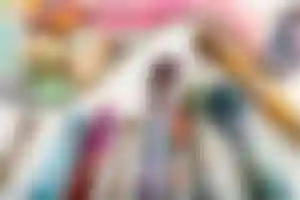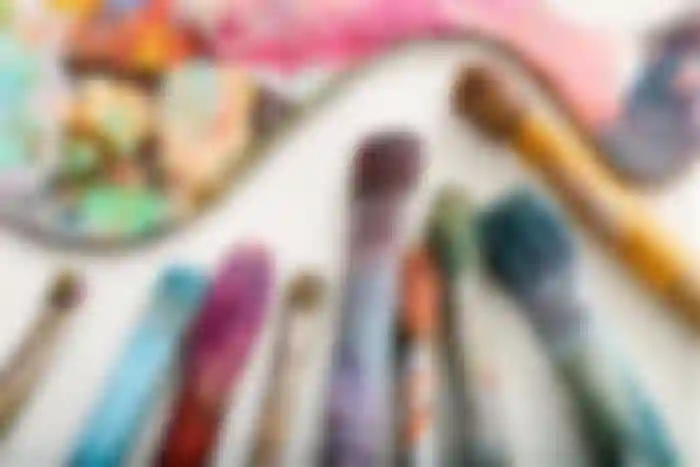The Nature of Art
Art is Everywhere.
The popular feeling about art is that it exists only in concert halls, museums, and art galleries in a world by itself, accessible only to those who can afford to pay for its enjoyment or to the critics and scholars who take time to study the art objects. On the contrary, art is found everywhere. We find art in the clothes and accessories we wear, in the design of our furniture and furnishings, in the style of the houses we build and the vehicles we use. We find art objects in the home and in the community, in religion, in trade, and in industry.

Art as Expression and Communication
We express our emotional state by some visible signs and activities. We burst into song when we are happy, or we dance, for it is pleasant to express joy through rhythmic body movements. We likewise sing out our love or our despair, or try to convey our deep emotions in poetic language.
Art as Creation
The word “art” is originated from the Latin ars, which means “skill”. It is equivalent to the Greek techne, from which our modern world “technology” is derived. In the early days, the term was applied not only to craftsmanship but also to proficiency in performing any activity. Thus, medicine, agriculture, and military expertise were considered arts. The word “creation” in this sense refers to the act of combining or re-ordering already existing materials so that a new object is formed.
Art and Experience
This refers to what an onlooker or listener undergoes when he perceives the work of art. The perception may kindle an experience which is similar or related to that which the artist tried to express.

Art and Nature
Art is not nature. A distinction must be made between two. The colorful sunset over Manila Bay, the sky full of stars on a summer evening, the sound of mayas singing in the fields, ---these are natural things, and they are not work of art. A work of art is man-made, and although it may resemble nature, it can never duplicate nature. The closest that we get to doing this is with a camera. But even then, a photograph is only a record of the subject or the scene.
Art and Beauty
A thing of beauty is one which gives us pleasure when we perceive it. The delight that we experience is called aesthetic pleasure, “aesthetic” coming from the Greek word means “to perceive with the senses”. What we call beauty is relative, however. What may be beautiful to us may not be so to others. And no two persons would derive exactly the same degree of satisfaction from seeing that they mutually agree upon as a beautiful object or from listening to what they both consider a beautiful tune.
ASSUMPTIONS OF ART
Art is universal. Art involves experience
Art is cultural. Art as expression.
Art is not nature. Art as a form of creation.
Art is good because it is popular. Art is good because it is universal. Why is art universal? Why is it not nature? Why does art demand involvement? Or Why does art involve experience? You can share your ideas on the grid below by providing some thoughts and personal experiences you’ve encountered in your life.
Historical Context of Art
Context of Creation
The political, socioeconomic, and cultural setting that a work of art is created in will affect how it is perceived within art history.

Art has existed almost as long as humankind itself and serves as a vehicle for the expression and communication of ideas and emotions. The canon of art history, however, has historically conveyed the political, religious, and philosophical ideals of the dominant power. Art history categorizes artworks and theories with a heavy reliance on the context or environment that the artwork was created in (i.e., its political, social, cultural, and economic settings).
Art history is the academic study of art objects in their historical development and stylistic contexts (i.e., genre, design, form, and style). A work of art from a particular historical period can be treated as an original source of information that was created at the time under study, and provides information about that time. Art historians study the contextual forces that shaped artists and their oeuvres, including their teachers and the influences of preceding styles; their patrons and their demands; their audiences; and their general socioeconomic, political, and cultural climate. These factors produce and influence different artistic styles and iconography, which are characteristic of their age and geographical location with reference to visual appearance, technique, and form.
In many ways, the historical backbone of art history is a celebratory chronology of beautiful creations of art commissioned by religious or civic institutions or wealthy individuals. Patronage of the arts has been used throughout history to endorse the ambitions and agenda of these institutions and individuals, and has been particularly important in the creation of religious art. For example, the Roman Catholic Church was an enthusiastic sponsor of the arts that resulted in a tremendous outpouring of architecture, painting, sculpture, and decorative crafts in medieval and Renaissance Europe.
Intended Context of Reception
Art’s context of reception depends on a variety of circumstances, both on the part of the artist as well as the artistic community the artist is participating in.
Throughout human history, art has been created across a range of media for many different reasons and to serve many different functions. Some of these purposes are intrinsic to the human instinct for harmony and balance, as well as the human desire to experience mysterious things and express the human imagination. Art can transcend the concept of utility or external purpose. These ideas are called the non-motivated purposes of art. However, art also comes from intentional, conscious actions that aim towards specific external goals, and those qualify as the motivated purposes of art. Motivated purposes usually arise from the artwork’s historical context, which consists of a multitude of different factors, including the social, political, economic, and cultural settings of the period; the artist’s patrons; and the artist’s intended audience.
Primarily, art is a form of communication, and like most forms of communication, has intents and goals directed toward other people. It may be used for entertainment, seeking to evoke particular emotions or moods in viewers, or for social inquiry and political change by portraying aspects of society in complimentary or critical ways.


